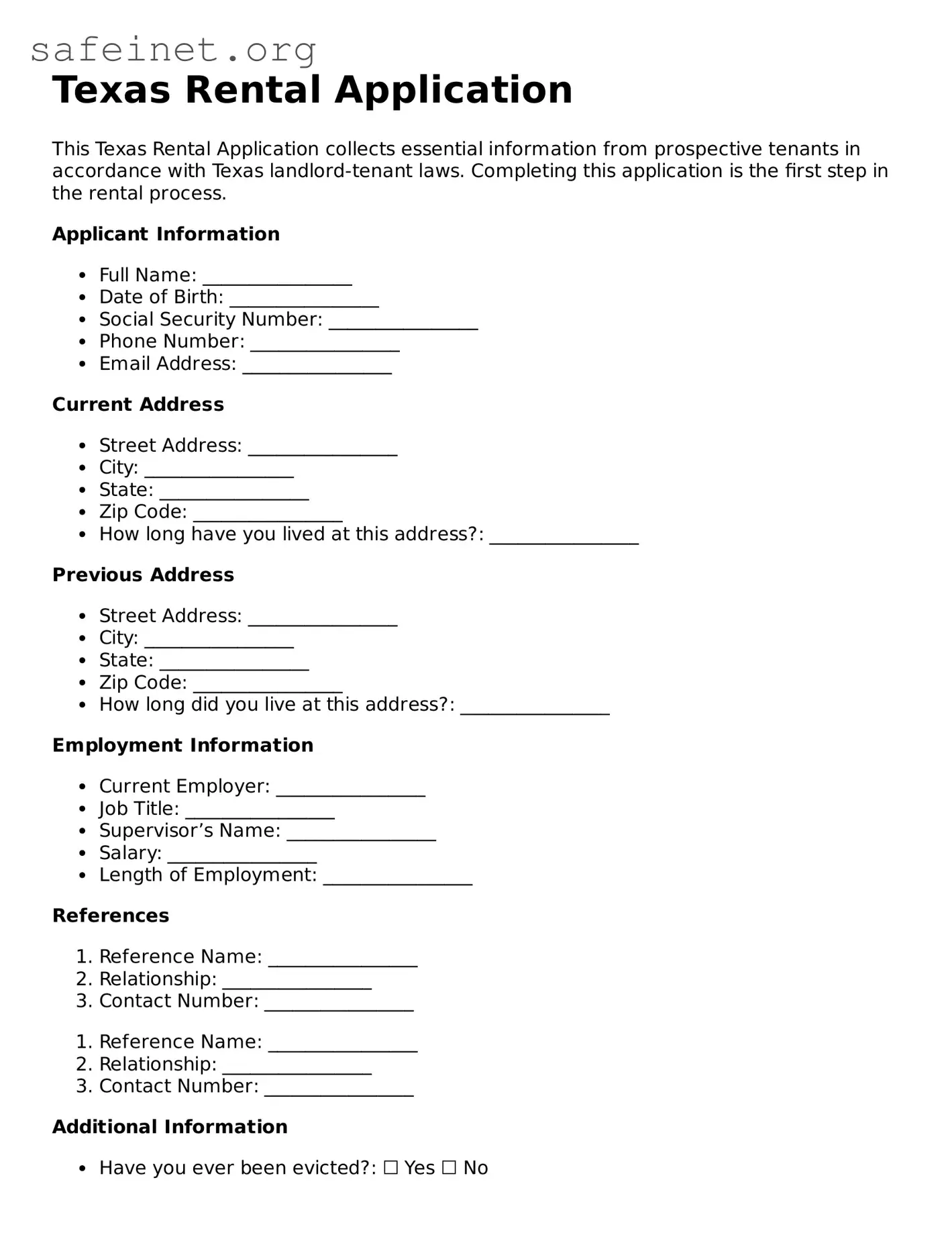What is a Texas Rental Application form?
The Texas Rental Application form is a document that prospective tenants fill out to apply for a rental property in Texas. This form typically collects important information about the applicant, such as their personal details, rental history, employment information, and references. Landlords or property managers use this information to assess the suitability of applicants for their rental properties.
What information do I need to provide on the application?
When filling out a Texas Rental Application, you will need to provide a variety of personal details. This often includes your full name, current address, social security number, and contact information. You may also need to list your current and previous employment, income sources, and rental history, including previous landlords' contact information. References may also be required, so consider gathering their details in advance.
Is there an application fee?
Many landlords charge an application fee to cover the costs of processing your application, conducting background checks, and verifying the information provided. The amount can vary, so it's essential to ask the landlord or property management company about their specific fee policy. Note that this fee is usually non-refundable, regardless of whether your application is approved or denied.
How long does the application process take?
After submitting your Texas Rental Application, the processing time can vary depending on the landlord or property management company. Typically, the review process may take anywhere from a few hours to several days. If you haven’t heard back within a reasonable timeframe, it’s a good idea to follow up to inquire about the status of your application.
Can I modify my application after submission?
Generally, once you submit your Texas Rental Application, it is considered final. However, if you notice an error or wish to provide additional information after submission, contact the landlord or property manager as soon as possible. They may allow you to provide corrections or updates, especially if the review process hasn’t been completed yet.
